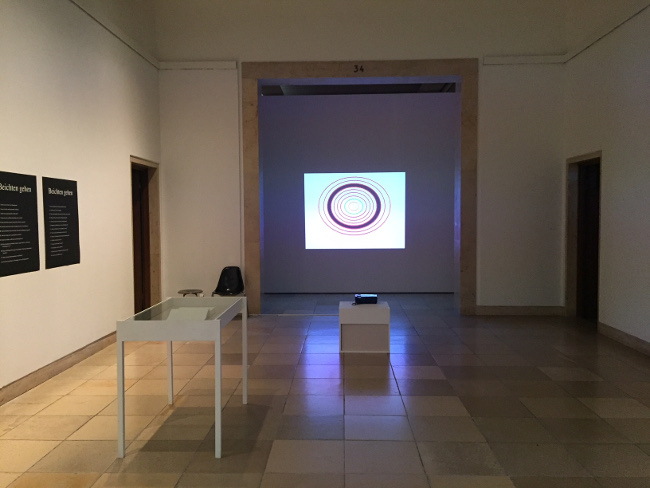When I started making drawings on an office computer with Microsoft Paintbrush (mid '90s), and music on a Mac SE with Music Works software (late '80s), they weren't retro. My hope at that time was to demystify "computer art" by using everyday programs that people might have come into contact with. The key word wasn't outmoded, it was "simple." I was dismayed by the bad programmer art I was seeing, which was starting to appear in museums. I thought the best way for a fine art trained artist to use a PC was in the most straightforward, transparent way. For example, to make a hand painted portrait that was clearly done with a paint program and no accompanying narrative about the means of production. This turned out to be harder than I thought -- viewers assume anything made on a PC uses algorithms or software "cheats." Hand skill is effectively overwhelmed by the medium.
By the mid-2000s, I was stubbornly clinging to MSPaint and 8-Bit music as they became retro styles. In 2004 I began experimenting with animated GIFs, applying some of the pixelly MS Paint ideas I had been working with. At that time GIFs were definitely retro and seen as a '90s, dot com era phenomenon. I thought about Richard Phillips' use of dated fashion photography to make large scale oil paintings and remembered this 1987 quote from Dan Graham:
According to [Walter] Benjamin, "progress," the 19th-century scientific and ultimately capitalist myth, is expressed in commodities, fashion goods which "produce a sense of eternal newness." This makes progress a mythical goal, never to be reached, for there is always the new and it is always superseded by the next new. For Benjamin, then, progress is actually a state of stasis. And yet it is the very stasis that makes the recovery of the just-past potentially subversive.
I believe now that the task of the artist is in part to resuscitate the just-past -- that period in time made amnesiac by commodity culture -- and to apply it as an "anti-aphrodisiac" (Benjamin's phrase). The Rolling Stones song "Yesterday's Papers" -- "Who wants yesterday's papers? Who wants yesterday's girl? No one in the world" -- makes this anti-aphrodisiac aspect of the just-past clear. [1]
I never articulated my "program" the way artist and musician Pierre-Luc Verville does below but I think he gives a compelling reason for all those MS Paint drawings and animated GIFs:
What is contradictory in the computer aesthetic is between what we expect from computer tools and what they do. Moody exploits this paradox by turning the fundamental elements of the perceptual system of computer environments into expressive elements that refer directly to the history of art. By exaggerating what the computer may or may not be expected to produce aesthetically, Moody reveals a world whose conditions of aesthetic possibility are constantly being transformed by the machine.
The appropriation of obsolete devices is thus the occasion for a critique of the obsolescence of the various aesthetic stages of the computer, for a re-reading of the horizon of expectation which frames the experience of it. [2]
Just as the "simple" had been used to critique the overly complex, the "old" can be used to critique the seamless world of the so-called 4th Industrial Revolution: the interconnected virtual reality of smartphones and platforms -- the latest incarnation of Benjamin's stasis of eternal newness. A pixelated sphere was the best a drawing program could do in 1984. What limitations (or assumptions) might a super-duper slick iPad be putting on something made right now? I also appreciate Verville's implication that art history can be used as a gauge or measuring device. Unlike my attempts at portraiture, everyone can see that the pattern of concentric circles (Kenneth Noland target) is made up of pixels in my OptiDisc gif. What similar soon-to-be-dated constituent part might the seductive iPhone be hiding? In future posts, I'll be comparing my theorist of choice, Dan Graham, with Verville's, Marc Augé, on the topic of past-as-critique. (They are saying very similar things.)

Tom Moody, OptiDisc, projection of animated GIF file, "PAUSE (Prelude)" exhibit, Haus der Kunst, Munich, Germany, 2018
NOTES
1. Dan Graham, "Legacies of Critical Practice in the 1980s," Discussions in Contemporary Culture, Hal Foster, ed., Dia Art Foundation, 1987
2. https://leparergon.org/index.php?title=Tom_Moody (French) https://www.tommoody.us/archives/2021/06/08/le-parergon-tom-moody-bio/ (English)
